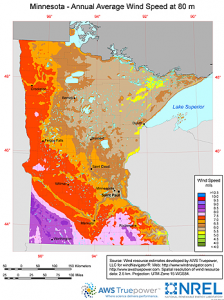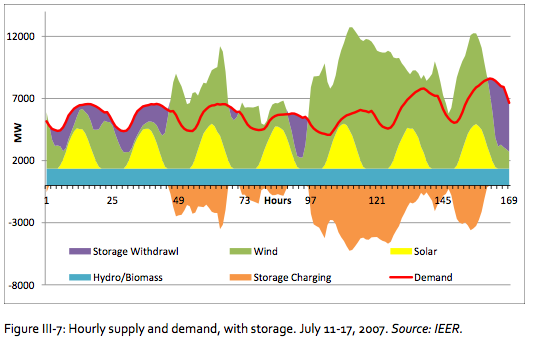Minnesota Electricity Could Be 100% Renewable, 100% Local
 A new report released by the Institute for Energy and Environmental Research shows that Minnesota can meet 100% of its electricity needs with in-state wind and solar power, and (with ample energy efficiency investments) at a comparable cost to its existing electricity supply.
A new report released by the Institute for Energy and Environmental Research shows that Minnesota can meet 100% of its electricity needs with in-state wind and solar power, and (with ample energy efficiency investments) at a comparable cost to its existing electricity supply.The notion that solar and wind energy cannot be the mainstay of an electricity generation system because they are intermittent is incorrect…. It is technically and economically feasible to meet the entire 2007 electricity demand of Xcel Energy [in Minnesota] using only renewable energy generation combined with storage technology and energy efficiency improvements…. A 100 percent renewable energy-based electricity system for Minnesota increases rates by a mere 1-2 cents per kilowatt hour when sufficient reasonable and economical investments are made in energy efficiency
The renewable energy mix would include approximately 13,000 megawatts of wind power and 4,600 megawatts of distributed solar PV. The expenditures for the new renewable energy, storage (via underground compressed air) and energy efficiency would pump more than $90 billion into the state’s economy and create 50,000 jobs.
With the combination of new renewable energy and significant energy efficiency, electricity rates rise slightly but Minnesota ratepayers are held relatively harmless. The following chart from the report illustrates, with some relatively conservative estimates about the cost of wind and solar:

While the Minnesota-specific findings are ground-breaking, the paradigm shift suggested for the electricity system is equally profound:
The conventional notion of a “peak load” needs to be replaced in designing an electricity system with a high proportion of solar and wind energy…. The crunch time may be during periods when the wind and solar supply are low relative to demand … “relational system peak.”… Instead of the peak load that drives marginal investments in generation as at present, dealing with the relational system peak will require comprehensive consideration of investments throughout the system – generation, demand, and storage (though not necessarily by utilities in all cases).
The following chart from the report illustrates how wind, solar, other renewables, and storage adjust to meet customer demand during a typical week in July, with both supply and demand being flexible.

This fundamental shift is an issue we’ve covered before, the challenge of reconciling a centralized electricity system with decentralized renewable energy resources.
Overall, Renewable Minnesota is a stellar report, incredibly thorough in its analysis and profound in its conclusions. It’s a must read for energy policy makers everywhere.
You can return to the main Market News page, or press the Back button on your browser.

